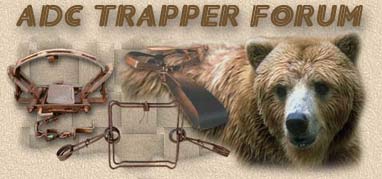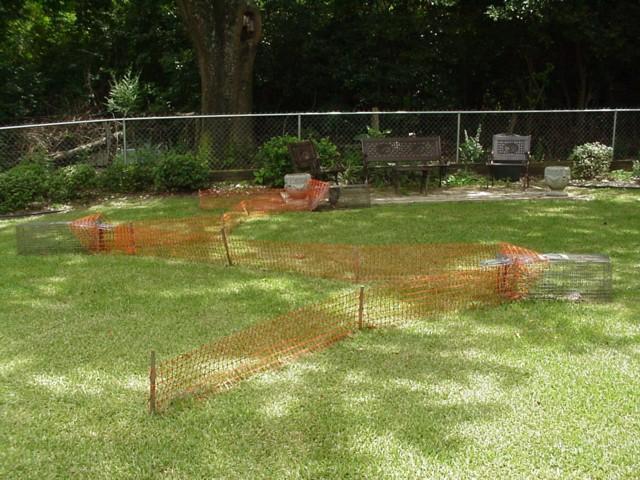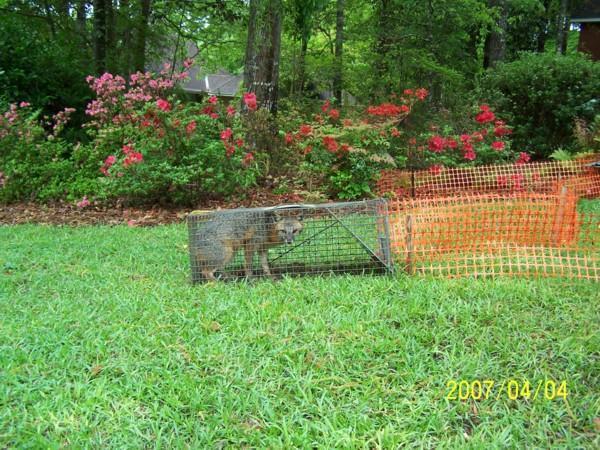The traps in the pictures are old single door HAVAHART 1079 with a pan treadle. Any well built trap will work. Skunks and raccoons have both been caught in them. They can both sometimes dig surrounding soil and fencing into them, unless they are set on plywood or other protective surface. I often used simple baits when trapping for meat eating animals,e.g., canned mackerel, canned cat and dog food, fried chicken skin and bones, beaver meat, peanut butter, dry dog food flavored with bacon grease and anise extract, etc. Persimmons and figs are good for fox and raccoons. I did use a few of Paul Dobbins and Asa Lennon baits and lures too.
Reply I made to another member by PM.
Four foot wide wide orange safety fencing is used for the fence.
I cut each strip about eleven inches wide as you will lose about an inch of material with each cut. On four foot wide material, use a black
Sharpie marking pen to divide the fencing into four equally sized strips. On your first attempt, practice cutting on a three or four foot long section of fencing. The left and right edge will have one straight side. I prefer the orange fencing for safety. It is easily seen by the customer and visitors.
I use Straight-Cut Aviation Snips, similar to those shown at-
https://www.homedepot.com/p/Wiss-Straight-Cut-Aviation-Snips-M3RS/100060795. They are available at most hardware stores. They are also useful for cutting ¼” and ½” hardware cloth. They come in straight cut, left cut, and right cut models.
I use wooden stakes for safety too. If someone does trip over the fence, the stake will break. The stakes are cut 18 inches long with a 30-degree bevel on the bottom end. The bevel will make the stakes directional, the stake will lean in the direction of the bevel. I little experimentation will show you what I mean. The stake is interwoven between the meshes of the fence.
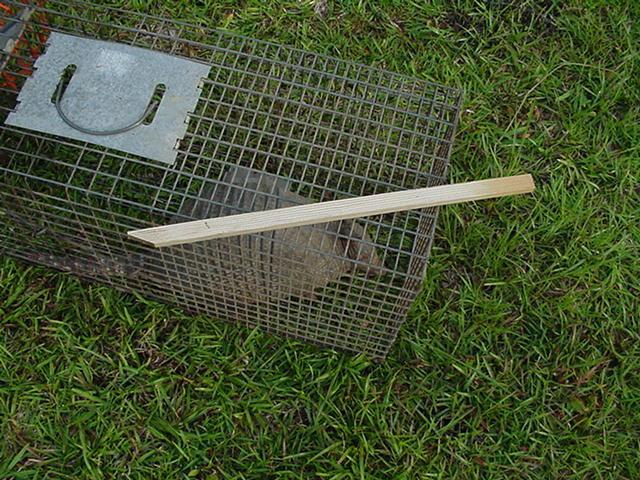
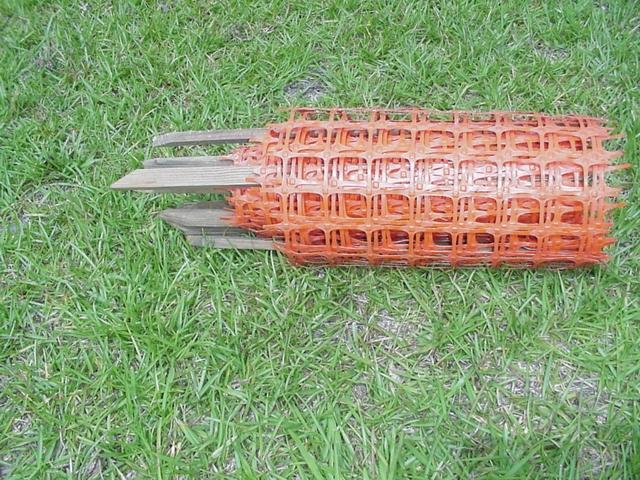

EDIT: 3 Oct 18 Raccoon pictures added. Baited cages, no drift fence.
Sleeping raccoon.
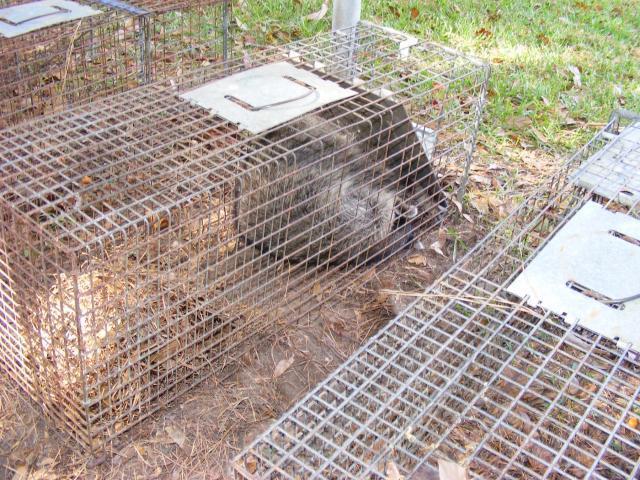
Raccoon woke up.

